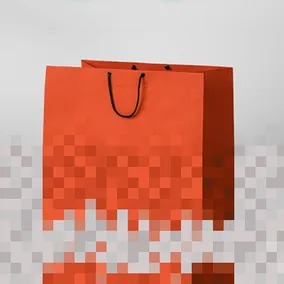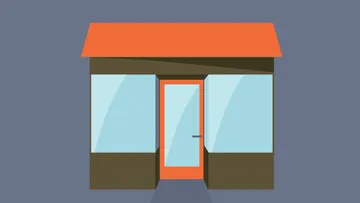Shop Around: Rethinking E‑commerce Strategies

Katherine Olvera, Former Senior User Experience Designer
Article Categories:
Posted on
Using retail store design to inspire better e‑commerce solutions.
As a newcomer to the UX field, I’ve recently been reading about best practices in web design. In Don’t Make Me Think, a classic UX book by Steve Krug, I came across this passage about navigability:
“Picture this: It’s Saturday afternoon and you’re headed for the mall to buy a chainsaw.”
This is the use case that Krug relies upon as an analogy for navigating an e‑commerce store. A series of signs guides the customer through the store’s organization, each sign more specific than the last, until the customer finally stands in front of the individual product they seek. This is akin to the cascade of menus a customer navigates through to a particular product online. Most e‑commerce sites today have adopted some version of this model.
But, there is a problem with the very first assumption of Krug’s analogy. The user he identifies is a male, and he shops, more or less, like a male. He goes to the store in search of a specific utilitarian item, finds that item, makes the purchase, and leaves.
However, men are not predominantly the people doing the shopping. According to Forbes, “Women drive 70-80% of all consumer purchasing,” while some reports, including one from Fona International, put that number as high as 85%.
This means that the underlying assumptions for many e‑commerce sites may not fit the most common use cases of a large proportion of users.

How Customers Interact with Physical Stores
Recently, I’ve been interviewing women about how they shop for apparel and accessories, both online and in physical stores, to understand their motivations. What are they typically looking for? What do they like and dislike about shopping both in a store and online? What might prompt them to buy more than what they initially set out to buy?
Here are a few common use cases they mentioned:
- You are looking for a gift for a friend. You don’t know exactly what you are looking for, but you want to browse and discover the perfect thing.
- You are looking for an outfit.
- You view the shopping experience as a social event. It is an opportunity to get feedback from trusted companions on potential purchases.
The above use cases are easily addressed in a physical store, but complex to address online. E‑commerce, in its current state, is mostly optimized for targeted, independent searches. Browsing and comparing are seen as secondary uses. This means it is relatively difficult to shop in these ways online.
For years, physical retail spaces have been analyzed and engineered to cater to a specific audience and the way they shop. Different stores employ a multitude of strategies to create order and hierarchy, to present a narrative, and to evoke visceral reactions to their products. I decided to go back to that initial store analogy to examine physical store design and observe how it influences customer behaviors.
If physical stores were designed in the same way that e‑commerce stores are, they would all look like the hardware stores mentioned by Krug. They would employ logical navigation to guide the customer to their ultimate aim. But they don’t. Something else is at play. Take Anthropologie for example.
Anthropologie may appear at first to be a haphazard assortment of products with little organization. If you are looking for a specific item, like a blue tea cup, there is no guarantee that you will find it easily or that it even exists in the store. However, this lack of navigability doesn’t preclude their customers from having a delightful shopping experience. In fact, most of their customers aren’t looking for a blue tea cup. Their customer is much more likely to be browsing for a gift for a friend, and she comes to Anthropologie, not for one specific product, but for the general style of products they offer.
Instead of focusing on navigation, Anthropologie’s physical stores focus on the “thrill of discovery.” The store is designed to make the customer feel as if they are happening upon a unique item at a flea market. It is staged in curated vignettes of complementary products to create a warm and tactile atmosphere. Customers are invited to pick things up. This shopping experience appeals to people’s emotional desires, not just a rational need to find a specific item. These types of emotional appeals often promote more sales because they encourage the customer to consider items outside of the scope of their initial search.
Remember that customer looking for a gift … well, she happened upon a couple things that were perfect for her house too. Now, a potential sale of one item has been converted to three.

Opportunities for E‑Commerce to Grow: Learning from Physical Retail Strategies
This is where many e‑commerce stores are missing the mark. Yes, e‑commerce is growing. More and more people are shopping online. However, when people shop online, they don’t tend to buy as many items. That is why retailers, like Target, are adding the ability to pick up in store. Besides saving on shipping cost, Target knows that customers who come into the physical store are exposed to a wide range of products and are more likely to add a few more items to their transaction.
How, then, do we capture that experience online?
Ostensibly, based on my conversations with women about their shopping habits, some users desire that experience. They want to be able to browse an assortment or compare products easily. How do we surface a wider variety of products to those users throughout their shopping experience? How do we do that without overwhelming them?
So far, the answer to many of these questions has been personalization. Amazon, for example, will suggest products based on order history: “Oh, we see you bought x, may we suggest y.” This solution is lacking though. A store can’t capture the thrill of discovery by showing a customer the exact item she hoped to discover on her own. Personalization attempts to predict what items a customer wants, not how they want to shop.
This solution is lacking though. A store can’t capture the thrill of discovery by showing a customer the exact item she hoped to discover on her own. Personalization attempts to predict what items a customer wants, not how they want to shop.
Some retailers, like REI, are redesigning their sites to fit how their customers shop. When REI observed their customer’s journey, they found that many customers were looking for equipment for a specific type of activity. Historically, they had classified their products by product category: tents, backpacks, sleeping bags, etc. This meant a camper would create separate queries for each piece of equipment he or she needed. This is like Krug’s use case. With a better understanding of how their customer shops, they have created the REI Garage, which organizes products by activity. Now, the customer is presented with the appropriate set of products for a particular activity with only one query. This solves the problem of surfacing a wider variety of products to the customer in an organized fashion. Meanwhile, REI’s competitor Patagonia has kept the original taxonomy of the site, organizing products by product categories. However, they have added the ability to compare products, allowing a customer to see detailed product information of up to four products simultaneously. Their customer seems to be most interested then in the performance of the gear and finding the best possible product for an individual use.
Meanwhile, REI’s competitor Patagonia has kept the original taxonomy of the site, organizing products by product categories. However, they have added the ability to compare products, allowing a customer to see detailed product information of up to four products simultaneously. Their customer seems to be most interested then in the performance of the gear and finding the best possible product for an individual use. Both of these approaches are valid. They consider the way customers choose to shop. That’s the larger question that we need to be addressing in e‑commerce now. How do we personalize the experience of online shopping? I suggest we look closely at how people, and women especially, shop in the physical world to inform some of how we design the digital one.
Both of these approaches are valid. They consider the way customers choose to shop. That’s the larger question that we need to be addressing in e‑commerce now. How do we personalize the experience of online shopping? I suggest we look closely at how people, and women especially, shop in the physical world to inform some of how we design the digital one.